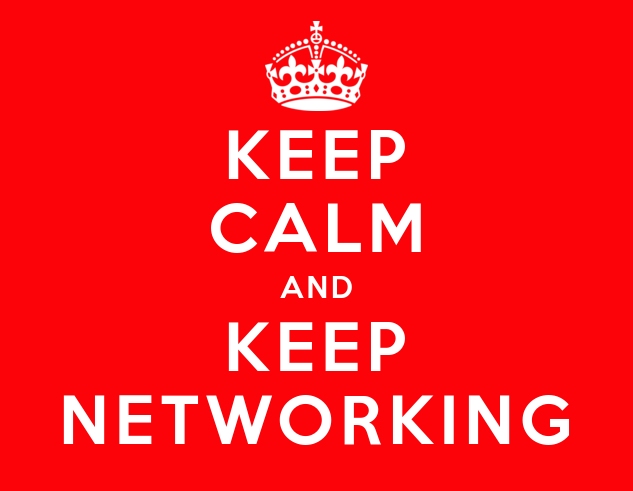Hunting for a Job: Advice for Navigating the Tight Job Market
Finding a job in a saturated market, especially with many recent layoffs in UX, feels like an uphill battle. Just over a month ago, I left my previous role. Now, I’m grappling with a tough question: How do I secure a job in such a challenging environment? I’ve sought advice from ADPList, engaged with people on LinkedIn, and more. Here, I’m sharing key insights from these conversations, totaling about 2,000 minutes!
1. Developing the Perfect Job Application Is More than Just a Resume
- Job Titles Can Be Deceptive: The job market is awash with many titles and levels. They don’t always provide a clear picture of the role. For instance, terms like “human factors” or “UX” can be ambiguous. I’ve realized that casting a wide net and ensuring I neither undersell nor overshoot is necessary.
- Connect with Insiders & Leverage Referrals: Almost everyone suggested to reach out to potential contacts within the company. Engage in informational interviews to understand the role, team, and company culture better. In this tight job market a single position may attract over 1000–2000 applicants. So, a referral can be the only chance of landing an interview.
- Tailor to Fit: My resume is often the first impression I make. Everyone I spoke to stressed its significance, suggesting it should reflect the specific requirements of the job description. This involves integrating relevant keywords, highlighting relevant experiences, and clearly showing a fit. While this advice seems straightforward, executing it is another story. I’ve heard positive feedback about TealHQ for tailoring resumes and tracking job applications, though I haven’t explored it myself. I’ve written extensively about my resume journey; delve deeper into it here if you want to refine yours. I eventually distilled my three-page resume to a single page!
- Show, Don’t Just Tell: A curated portfolio can be incredibly impactful. I’ve made several efforts to make mine user-friendly and concise with highlights of my key projects, showcasing the breadth and depth of my experience. Read more about how to make a great portfolio.
- Showcase or Hide My Academic Strengths? Some feedback suggested my resume might appear overly academic, while others found it appropriate. I’ve chosen to condense the academic details, focusing more on the tangible impact. I’m also embracing my roles as a software engineer, academic, and expat. The consensus seems to be that an academic background can be an asset, provided I emphasize its industry relevance and transferable skills.
2. Personal Branding: Making My Mark in the Digital Age
- Engage on LinkedIn: Many emphasized that LinkedIn is more than just a digital CV. Sharing my insights on industry trends, engaging with content from thought leaders, and maintaining an active presence can be transformative. This means tagging colleagues, commenting actively, and using relevant keywords. While it sounds simple, producing consistent, quality content requires dedication.
- Narrating My Journey: I’m documenting my journey, hoping it might resonate with others. I discuss the challenges I’ve encountered, the solutions I’ve developed, and the impact of my efforts. For a deeper dive, check out my other posts on resume building, portfolio building, industry research vs. academic research, and transitioning from software engineering to research (yes, I take turns occasionally!).
- Stay Updated: The tech landscape is ever-evolving. I’m committed to staying abreast of trends, challenges, and opportunities to ensure I remain a sought-after asset in any new role.

3. Keep Calm and Keep Networking
Oh well, everyone talks about networking, but I’ve met individuals who’ve secured jobs primarily through their networks. So, it’s real. My first job came through networking, but subsequent roles were secured through cold applications. So, I’m leaning into collective wisdom by keeping calm and continuing to network!
- Build Genuine Human Connections: Most agreed that networking isn’t just about collecting contacts. It’s about cultivating authentic relationships that can bring hidden or unexpected opportunities later in time (delayed gratification). I’ve been leveraging “The 20-Minute Networking Meeting — Professional Edition: Learn to Network. Get a Job. by Perez, Ballinger” strategies to structure my networking sessions. I also frequently use ADPList to connect with individuals who are already keen to assist. On LinkedIn, I’ve found that shared experiences or backgrounds, like sharing culture or transitioning from academia to industry, can be excellent conversation starters.
4. Preparing for Interviews
- Gathering Intel: Several individuals advised me to understand a role’s broader impact and contribution within its organization. This understanding can be invaluable during interviews, helping me discuss company-specific nuances and ensuring I target roles that align with my aspirations.
- Anticipate Common Questions: Prepare for questions like “Tell me about a time you had to choose a new research method,” “Describe a challenge you faced in a project and how you overcame it,” “How do you fit in this role?,” “How would you like to contribute to the company if you join?,” or “Share an example of a time when there was significant disagreement or resistance to your research findings? How did you handle it, and what was the outcome?”
- Prepare Questions to Ask: Some suggested that asking good questions during interviews shows how much you have done your homework. For instance, “Why did the previous person leave this role?” or “How do you envision the new person in this role contributing in the first six months?” may help show your curiosity and understand the expectations better.
Securing a new job in this market is incredibly challenging. Perhaps that’s why some individuals remain in roles that don’t fully satisfy them.
Changing roles, like transitioning from academia to industry research, feels extra tricky — a marathon of continuous learning and adaptability. However, these conversations and reflections have become my personal growth project. They’ve prompted me to reflect on my unique strengths and future aspirations. I hope sharing this journey offers some help to others navigating similar paths.